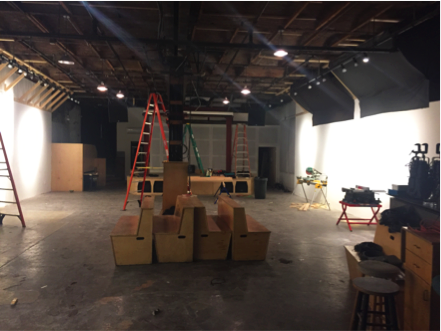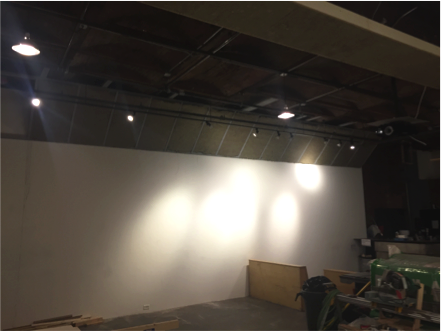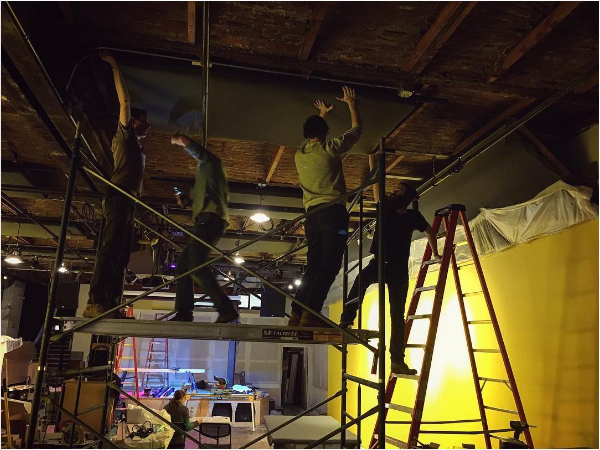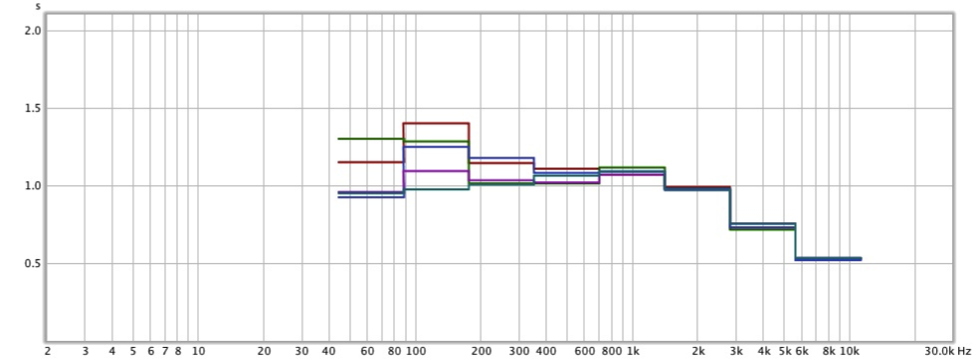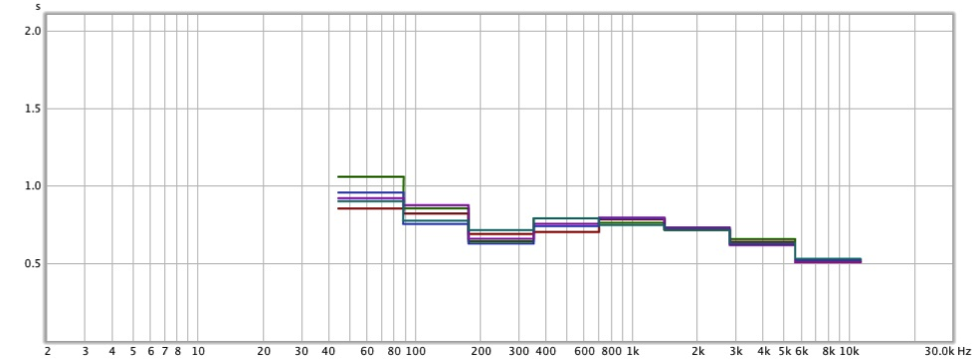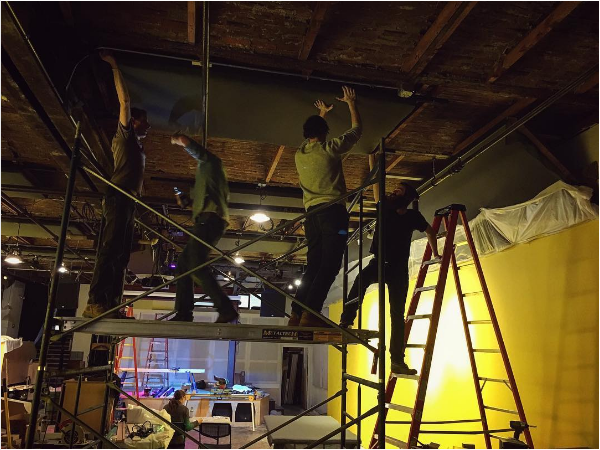As part of our March REFRESH, we aimed to tackle some of the sound problems in our funky, brick-ceiling-laden room, by improving the actual acoustics in the space. The following is a summary of the work done, with some handy graphs to show exactly what we accomplished. First, a short primer on acoustics…
Sound travels through the air much like ripples on the surface of a lake. When you drop a pebble into the water, the disturbance causes periodic waves to radiate out in all directions. Those ripples shrink as they travel away. For sound, we have to think in three dimensions. I like to imagine a tremendous balloon expanding outward in every direction. The balloon will get thinner as its inflates, much like how sound energy (which we perceive as loudness) decreases with distance. This is how sound operates without boundaries. But what about sound indoors?
Indoors, sound waves hit walls, floors, and ceilings, and energy reflects back into the room. The sound waves continue to reflect from surface to surface until they are too quiet to be heard. How quickly the sound waves dissipate depends on the type of material it’s bouncing off of (or not). Everyone sings in the shower. Part of what makes it fun is that the sound bounces around a lot, supporting and enhancing your voice, much like a good concert hall can do. That is because ceramic bathroom tiles do not absorb much energy with each sound wave reflection. The opposite is true in a space like a closet with heavy coats; much of the energy there is absorbed quickly, making an acoustically ‘dead’ space that many DIY musicians know to be the secret weapon of their bedroom recording studios.
Reverberation time (how long a sound takes to die out) is determined by the size of the space and the absorption levels of all the surfaces. Cathedrals tend to have very long reverberation times, because of their large size, tall ceilings, and reflective stone surfaces. However, reverberation is most flattering in moderation. Too much reverberation can make it hard to understand speech from a distance, and cause analogous issues at concerts of any volume. One of the goals of acoustic treatment at SPACE was to lower the reverberation time in the room to give the sounds coming off our stage more clarity and definition; let our high-end (still basically brand new) Danley speakers really show what they can do.
The plan, developed by SPACE co-founder Jon Courtney (with consultation from master acoustician James Lindenschmidt), was to add a six-inch-thick layer of acoustic insulation where the gallery side-walls meet the ceiling. Additional panels were placed close to the ceiling throughout the room (see pictures of construction below).
Also below is a before and after comparison of the reverberation time. The Y axis is the time it takes the sound to decay 30 decibels (about the difference between the volume of a normal conversation and an average concert) and the X axis is the pitch (or frequency) of the sound. The colored lines represent different measurement points throughout the gallery.
As the graphs show, we were able to lower the overall reverberation time from an average of 1.25 seconds to .75 seconds, dramatically affecting some of those problem frequencies in our room (like the low-end build-up you see between 90 and 180 Hz). Although this may sound like a small change, the difference is very noticeable. We’ve been getting great feedback from audiences and musicians alike. Speech sounds crisper and more clear, films sound fuller and more immersive, and music has more clarity and doesn’t feel as loud. Come hear for yourself and let us know what you think!
